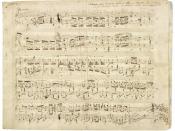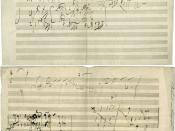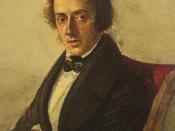The Romantic Period altered the way in which music was perceived. Music became an art form in its own right and it no longer needed to be written for purely practical uses. Music was brought to the people and the people prized what was now available to them; thus the public concert was borne, and with it, virtuosity.
The romantic period broke away from the constraints and rules of the classical period - the ideals of balance, proportion and disciplined expression, in favour of more radical kinds of expression, seeking out all that was new, curious and adventurous; cherishing freedom of expression, movement, passion and fantasy.
The tiny piano piece and the brief lyrical song were forms that had little significance during the Classical period, but took on the highest of importance to the romantics. On the other hand, the moderate length of the classical symphony and opera was hugely extended, as seen by Mahler's symphonies and Wagner's operas.
The creations of the romantic artist were emotional in character rather than guided by structural rules.
Emotion became more urgent and intense as form became freer and tone color richer. Remaining mainly tonal, Romantic music became more chromatic, the melodic structure remained periodic but phrase structure became less regular. Music became more poetic than abstract and more melodic than harmonic.
The romantics did not see that music needed to be written for a specific practical purpose; it formed a legitimate art form in its own right. Music had always played an important part in people's lives, but it had been mainly used in religious ceremonies and by aristocracy. However, in the romantic period, music became attainable and it became popular; so people wanted more and more. Ordinary people now began to play music at home as well as going to concerts...


